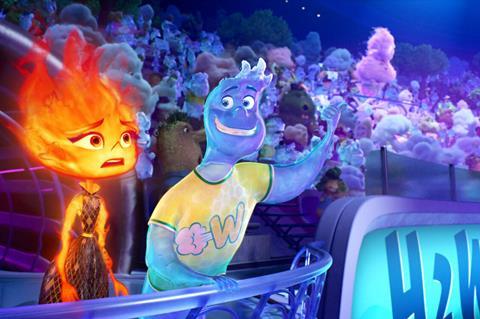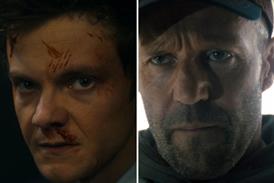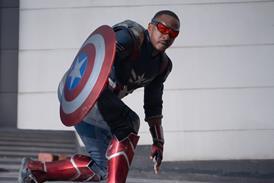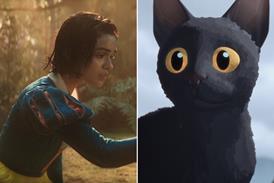
Discussion abounds on how artificial intelligence (AI) is being and could be deployed in animation and visual effects (VFX). Some studios are cautiously embracing AI as a new tool — Marvel TV series Secret Invasion generated its opening credits with AI while Pixar used it to create intricate flame effects in Elemental.
Others are more resistant. One key concern is that if AI can streamline processes, the workforce could also find itself streamlined. “We mustn’t forget that behind the wonder of novelty [could] lie thousands of jobs destroyed and suffering, often discreet,” says filmmaker Benoit Chieux, who won the audience award at Annecy International Animation Film Festival for his animated feature Sirocco And The Kingdom Of Air Streams.
And could the creative process be scrapped entirely if studios turn to generative AI as a cheaper way to create entire animations? “I recently saw an AI-generated image of a character with six fingers. If AI ever makes it possible to produce animation satisfactorily, I imagine that a cash-strapped director in a hurry will be happy to use a machine capable of doing the work for him,” Chieux adds. “It’s a job like any other, and profitability unfortunately sometimes takes precedence over quality.”
Supporting the creative
UK-based Aardman Animations is starting to “tinker” with AI, according to Richard Beek, senior producer at the studio. He is optimistic about its potential benefits, believing it could help to enhance creativity by minimising painstaking tasks.
“At the moment, AI is very much seen through the prism of it being a threat. At Aardman, we’re trying to see it as a tool to support the creative and allow us to facilitate more productions,” says Beek. “A good creative company could use it to have more projects at any one time. You can take tasks that have to be done, but aren’t vital tasks, off [animators’ hands].”
Theo Jones, a VFX supervisor at Framestore, who was Oscar nominated for his work on Christopher Robin, similarly sees a window of opportunity. “It is a very exciting time. It’s presenting a lot of new opportunities,” he says. “But it’s going to be disruptive.
“I’ve been in the industry for 20 years,” he continues. “In that time, the computing power available to us has risen exponentially. A lot of things that have come along have sped up the way we do things, but each time that’s happened, we’ve added more complexity and the demands of the films have got greater. There haven’t been mass redundancies because everything has become 10 times faster. Certain departments might get smaller but other departments get bigger.”
The use of AI is nothing new in VFX. “Generative AI has suddenly broken into the mainstream,” notes Jones, “but machine learning [ML — an application of AI in which data models are used to help a computer learn without direct instruction] in this current cycle has been around for a few years, and we’ve been utilising it to speed up our workflows. It still requires artist intervention, it just takes some of the drudgery out.”
Framestore has used ML on projects including Disney+ feature Peter Pan & Wendy, in which it was used to bring Tinker Bell to life. However, some studios appear to be feeling an element of shame around such techniques. “It’s tricky at the moment,” reflects Jones. “We are having to be careful with the use of the terms AI or ML in conjunction with some of the workflows, even though they are in no way connected to the generative AI that’s causing the controversy. Not all studios want their name associated with AI.”
Smoke and mirrors
Sean Feeney, head of production at UK animation production and sales outfit GFM Animation, believes AI is simply not good enough as it stands to be a real threat to the industry’s workforce. “It’s a load of smoke and mirrors,” he says. “Over the years, there have been all these ideas of automating animation and visual effects, and they’ve all turned out to be false dawns.
“The profit margin of a CG [computer generated] studio is marginal, it’s not like they are rolling in cash, so they don’t have the ability to take the risk of jumping to new technology.”
But where might we sit in three years’ time? “AI is supposedly developing at lightning speed,” says Feeney. “If you look at virtual reality and augmented reality — 10 years ago everyone was wearing headsets, but they were horribly heavy and gave kids headaches, and now kids are all looking at normal screens again. At the moment, it strikes me as a load of baloney.”
Feeney also refers to international animation studios outsourcing labour to countries such as India. Could AI replace this practice? “If you’re an Indian studio, you’re paying people low salaries and using low-cost kit. You’re being pushed by the international, Canadian, British, Irish studios to deliver per minute at a very low cost. They won’t have the headroom to develop the AI to do this for them. If you already have a cheap workflow, someone would have to spend and risk a lot of money developing an AI solution to replace all these people.”
Jones agrees that AI is not without technical drawbacks. “AI is still quite hard to control,” he says. “If you’ve got a specific creative vision in mind, as filmmakers tend to, it’s difficult to art direct something. You might be able to get output quickly from generative AI to a high standard, but it might not be quite what you want. Tweaking it to then be what you want is a very difficult process.”
There is also the thorny issue of copyright. “Some of the most popular generative AI models are based off training data sets without copyright,” notes Jones. “That still has to be worked out in the courts.”
While AI may be dividing animation and VFX specialists on its threat level to the workforce, no-one who spoke to Screen International had heard of individuals in the industry losing jobs because of the adoption of AI processes — and all of them agreed AI cannot replace creative excellence.
“It feels like AI is an amalgamation tool,” says Beek. “I struggle with the idea of it being intelligence. It sounds like it’s collating and finding the average. The best cinema and television isn’t average.”
























No comments yet